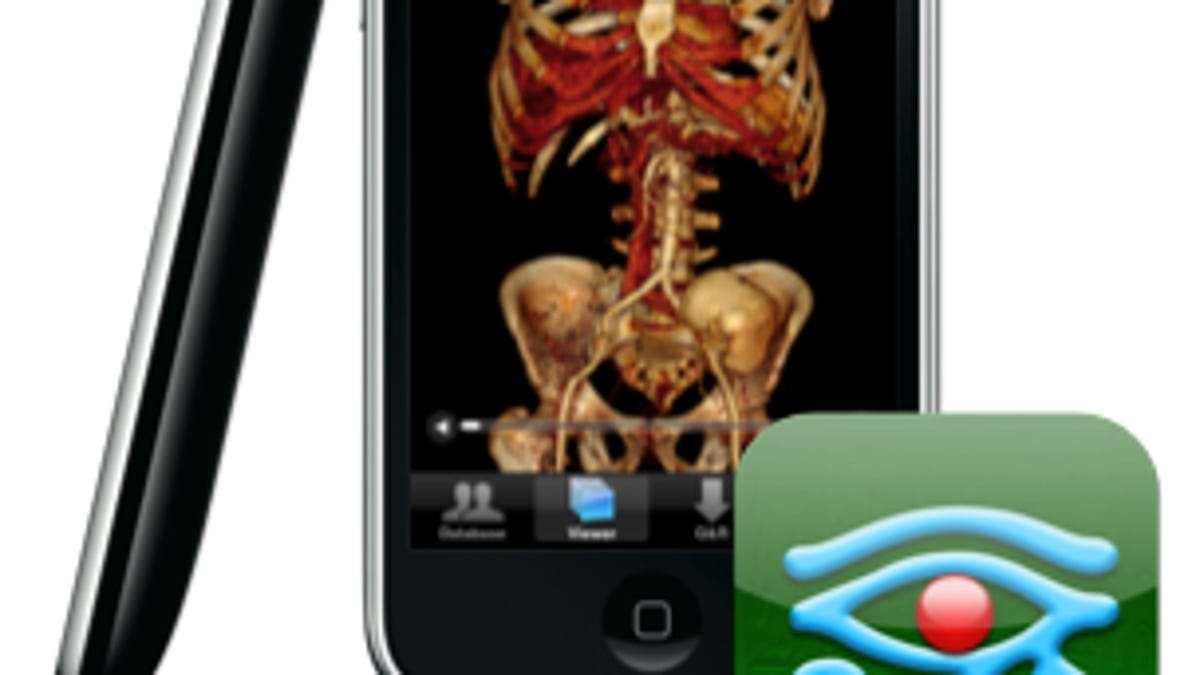Radiologists rally behind imaging app OsiriX
Researchers at Johns Hopkins University are throwing their weight behind a medical imaging app--created by radiologists--that can aid in diagnosing acute appendicitis with surprising accuracy.

Just over a year ago, the open-source Mac image viewer OsiriX released its widely hailed medical imaging software for the iPhone. The software was created by a group of radiologists who also proved to be sophisticated programmers, and was hailed by a wider net of radiologists as an app with serious promise.
More recently, scientists from Johns Hopkins University rallied formally behind the app when they presented the results of a study conducted at the University of Virginia in Charlottesville of patients suspected of having acute appendicitis. Reviewing nothing more than computed tomography (CT) scans over an encrypted wireless network using an iPhone 3G with the OsiriX app, researchers were able to diagnose acute appendicitis correctly in 99 percent of the scans of 25 patients, with one false negative.
"This new technology can expedite diagnosis and, therefore, treatment," says Asim Choudhri, a neuroradiologist at JHU who led the study. "We knew that recent advances in handheld device technology allowed viewing of medical imaging, but it [was] unproven whether viewing on a small screen allows a reader to reliably and reproducibly obtain information."
The findings of this study, which Choudhri tells me was funded internally at the UVA Department of Radiology (and yes, his allegiance is clear--he owns an iPhone and in fact supplied it for the study) are encouraging not only for possible appendicitis cases, but a wide range of illnesses such as aneurism and stroke that require fast diagnosis. An extension of an earlier desktop application, the OsiriX app displays and analyzes several common imaging modalities, from ultrasound and CT scans to MRI and PET in the standard DICOM format, as well as many others, from TIFF and JPEG to PDF and Quicktime.
Of course, after watching the following video of someone flipping through various patients' images, it's clear that privacy concerns still need to be addressed before a mobile application can be considered truly practical. If and when that happens, Choudhri says, "We hope that this will result in improved patient outcomes, as evidenced by decreased rates of ruptured appendicitis, shorter hospital stays and fewer complications."
Why a healthy layperson would want to shell out $19.99 for this app remains somewhat unclear, but one radiologist says that at the very least this app is valuable for the storage of personal "old films" (earlier imaging exams):
One of my patients once avoided having a risky lung biopsy simply because he happened to have an old film at home as a curiosity. This old film showed us pretty convincingly that the potential lung cancer we saw on his new film was actually a benign granuloma, and was unchanged over the intervening decades.
OsiriX is not yet approved by the U.S. Food and Drug Administration, so official diagnosis must be saved for an actual exam and doc's visit. But could OsiriX single-handedly bring down the cost of medical imaging in the U.S.? Stay tuned.

